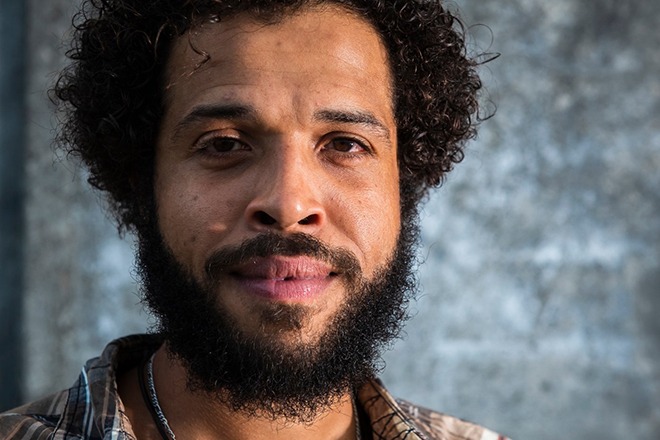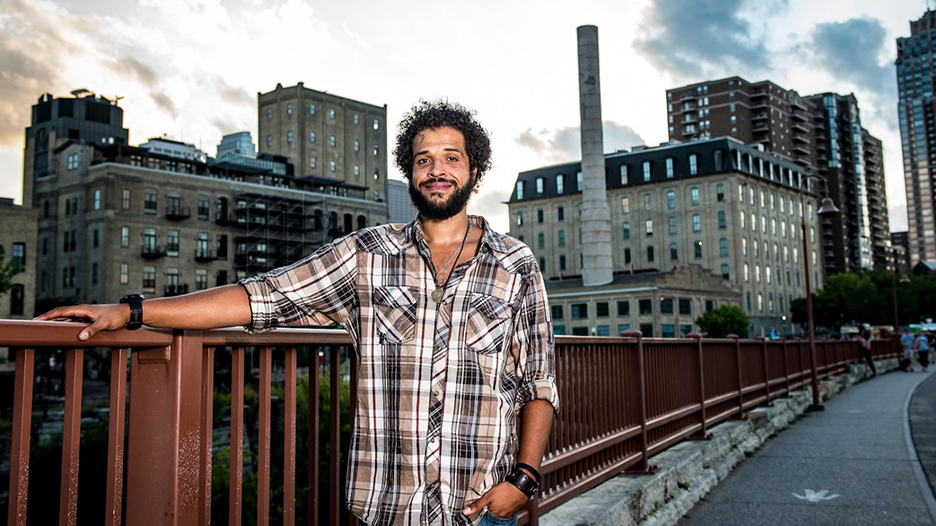Miles Kipper’s time at Minnesota State Mankato gave him two things he put to use on the I-35 bridge on May 31. One was an ability to tear through a mob.
That came from years as a rugby player. The second was an immersion with other cultures, races and philosophies. That, too, came from rugby, as well as studying abroad, working around the country and growing up in Minneapolis.
Kipper was among an estimated 6,000 demonstrators on a closed portion of the bridge in Minneapolis two days after the death of George Floyd. During a moment of silence among the still crowd, a wayward semi hauling a fuel tank barreled toward the gathering at around 70 mph, its horn blazing and the demonstrators scrambling, screaming and running from its path.
As the truck slowed and came to a halt, dozens in the crowed turned—in direction and mood. While some fled fearing the tanker would explode, others surrounded or climbed on the cab frantically seeking to pull out the driver. Eventually, they did, and Kipper’s mind raced.

He had been filming the truck before it stopped, thinking he was documenting evidence that would be used in the driver’s trial for murder. But as he saw a mob clawing at the driver ready to tear him apart, Kipper dove in and, using what were basically rugby scrum moves, made his way to the driver. Not to harm him, but protect him.
“As this dude is dragged from his truck screaming, I realized real quickly it wasn’t going to be him killing people that was going to be what happened that day,” Kipper said. Though still sure the driver had meant to harm or kill the demonstrators, Kipper fought his way to him and, along with a few others, formed a small barricade around him.
Violence against the driver would ruin the cause that brought thousands together that day protesting George Floyd’s treatment, Kipper said.
“It’s not who we are up here and it’s not what the message of the protest was about.”
Kipper and a handful of others who were protecting the driver from enraged demonstrators delivered him to police on the bridge and were maced. Kipper said he doesn’t blame the police given the chaos. Like many on the bridge, he jumped to conclusions about the driver who, after his arrest was released with no charges. He had been lost and panicked.
“I learned a ton about perspective from this,” said Kipper, who on the day shared his videos of the day accusing the driver of bad intent. “It was an accident. It was a terrible accident.”
Striving to protect a driver he thought was in the wrong displayed what Kipper, when asked about it, jokingly calls a “curse of empathy.”
“I’ve been really blessed – starting in Mankato – to get through silos. I’ve had the chance to know people from all over the world. When I was at Minnesota State Mankato I spent six months living in Europe for a study abroad program. In Mankato I had friends on my rugby team who were soldiers and future police officers and all sides of things.”

After graduating in 2010, Kipper spent five years in business around the country, returning to Minneapolis to get back into the music industry he grew up with in the city. Through it all, around the country and especially in Minneapolis, he’s been a first-hand student of racism. That’s what put him on the bridge.
“I couldn’t not be involved in it,” he said, adding that in the past ten years he’s been taken from his car by police at gunpoint three times — in Minneapolis, Florida and Louisiana.
“And I thought that was normal, and it’s really just been in the last few years I’ve been speaking to people I’m like ‘Wait, you’ve never had police point a gun at you?’ Man, that’s been my experience forever. ‘You’ve never had a police pull you over and put you in the back of their car and question your white girlfriend and asked if they’re being kidnapped or held against their will?’ That’s all stuff I deal with and have dealt with.”
It’s only going to get better, he said, with education and empathy.
“We have to humanize this from both sides,” he said. “At the end of the day, most people just want to be able to see their family and put a roof over their heads and make enough money they can put off to the side.
“After you get through with the falseness and the uncertainty of what you assume about people, everybody’s pretty good for the most part.”
Speak Your Mind